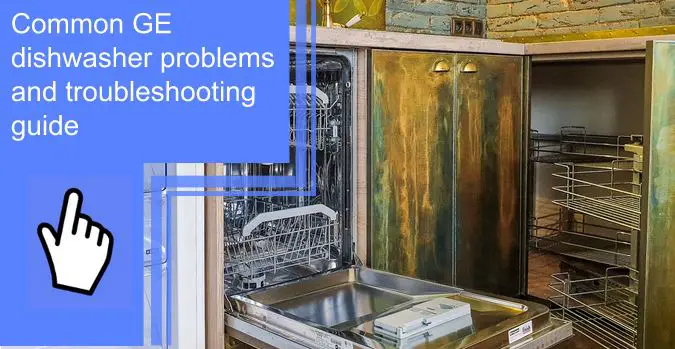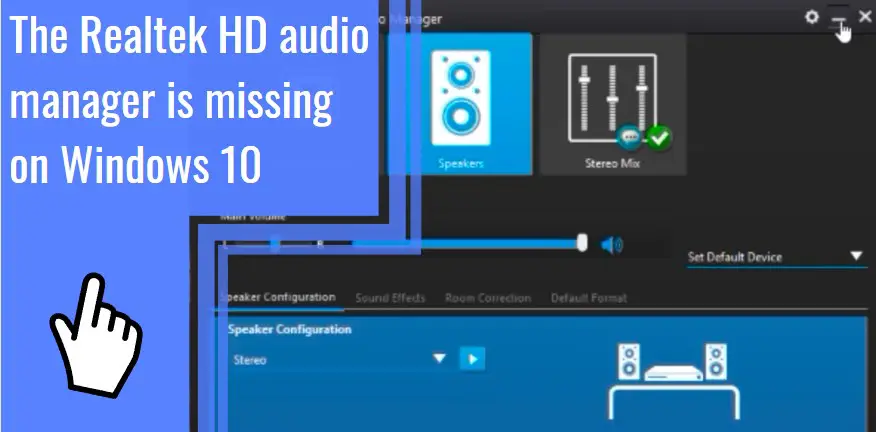What you find on this page:
Dishwashers are appliances that come in handy for cleaning dishes after meals. In addition to being convenient, dishwashers are energy efficient. As a result, they save time and water compared to handwashing or using a sink.
Despite these benefits, GE dishwashers aren’t always trouble-free. This guide will cover some of the most common problems and teach you how to fix GE dishwasher problems.
GE Dishwasher Most Common Problems And Solutions
1. GE Dishwasher won’t start but has power
If the dishwasher is not starting up, there are several reasons why this could happen.
The first thing to check is whether the power supply is working correctly. If everything seems fine, try unplugging the kitchen appliances, including the GE dishwasher, lights, fans, and other electrical devices. Then plug back in one appliance at a time until you identify the problem.
Also, check the electrical connections at the panel board. Make sure they are tight and not loose. Also, make sure that all of the wires are connected correctly.
Ensure the circuit breaker panel is installed correctly and not overloaded. Check if the fuses are blown and replace them if necessary. Any circuit should not exceed 40% of its total amp-hour capacity.
If all the above checks come back fine, checking the wiring of the GE dishwasher may help you determine what is wrong with the unit, including proper connection to the terminal or broken insulation. If any damaged wire is found, repair it immediately.
If none works, there might be a problem with the water valve controlling water flow.
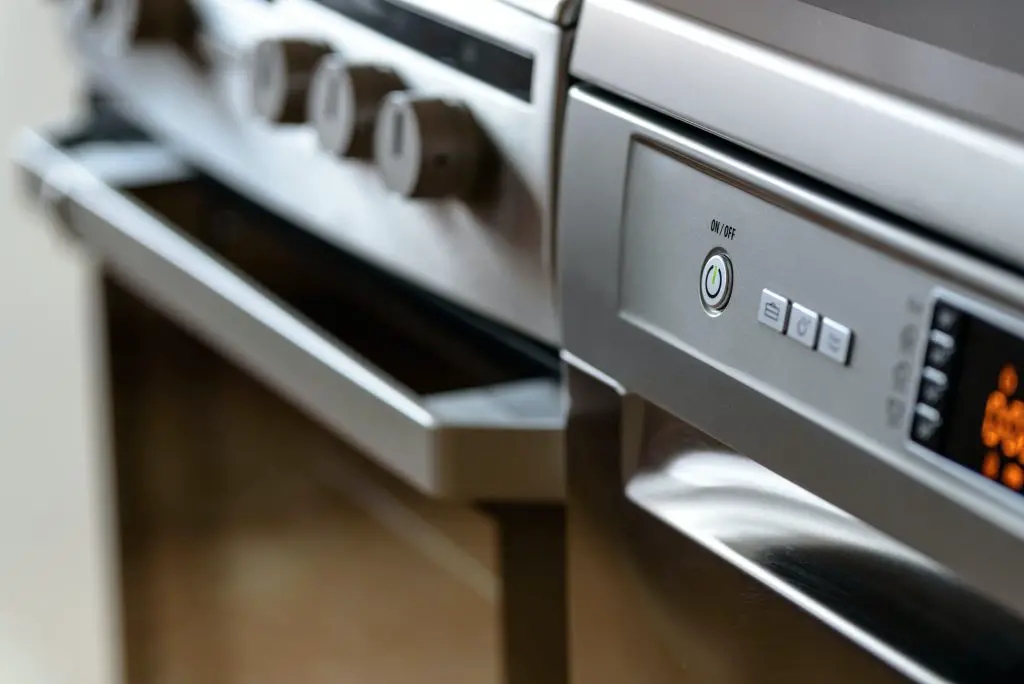
2. GE Dishwasher won’t latch
If the door doesn’t close completely, something is blocking the opening. First, you need to check the door hinges and the latch mechanism. If the hinge is bent or broken, you’ll need to replace it.
The catch must be able to move freely, so it closes tightly. Adjust it if necessary and replace it if it is damaged.
3. GE Dishwasher Not Cleaning
This issue occurs when the drain line becomes clogged. The drain line usually connects to a trap where water collects before entering the drain pipe. A clog can occur from food particles, soap residue, hair, and other debris.
If there is a clog, turn off the power supply to the dishwasher. Then look into the drain tube using a flashlight. If you find obstructions, use wired-nosed pliers or an old toothbrush to get rid of them.
If there is no obstruction, you can use a plunger to clear the drain line. Once done, turn the power supply back on and test the dishwasher again.
4. Dishwasher not draining at the end of the cycle
When the dishwasher drains improperly, the drain line is blocked by debris. Therefore, you must remove the access panel and clear the drain line to clean it.
There are a few other reasons GE dishwashers are not draining correctly:
- Leaks
- Dirty dishes
- Faulty pump, etc.
You also need to check every part of your dishwasher for possible damage and repair or replace it if necessary.
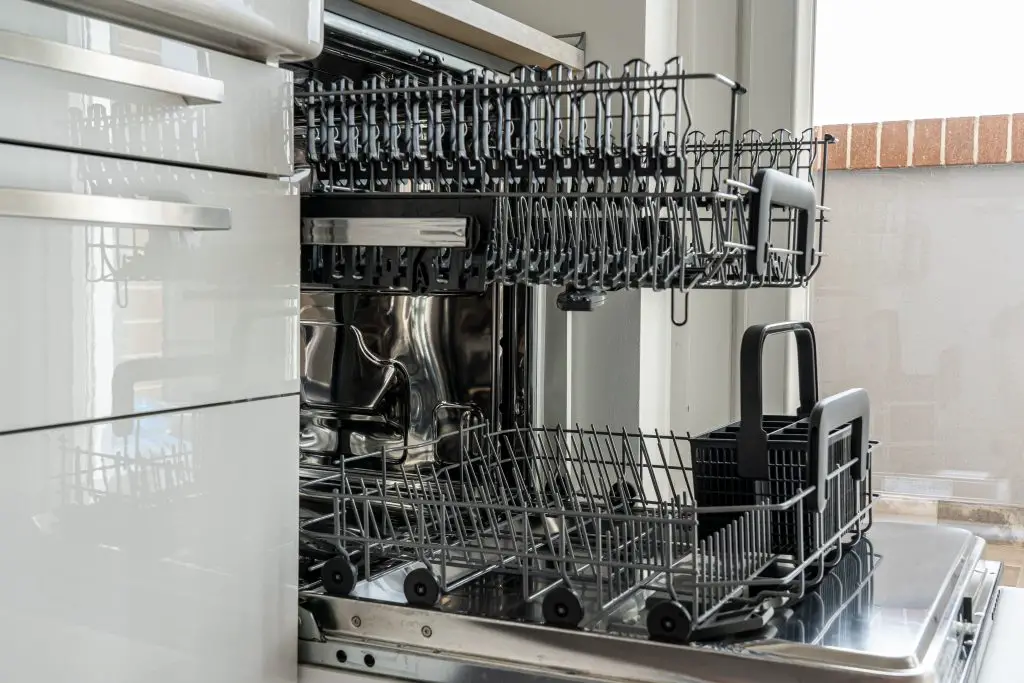
5. Not Cleaning Top Rack
If the top rack does not clean properly, the lid is stuck. It happens due to improper installation.
First, open the access panel and check the two Phillips screws carefully. Also, ensure that the screws are firmly attached to the rails.
If the racks are not securely attached to the rails, they will come off quickly after you remove the screws.
Replace and reattach it to the rails using the screws again and tighten them as much as possible.
6. Not Spraying Water
If the GE dishwasher is not spraying water, it could mean a leak on the hose connected to the water valve.
Check the hoses carefully. They should not be leaking at all. If you see any signs of leakage, you’ll need to fix it immediately.
To repair the problem follows:
1. Remove the access panel from the dishwasher.
2. Locate the water supply valve and the hose that connects it to the dishwasher.
3. Remove the screws from the bottom of the dishwasher and lift the tub out of the unit.
4. Inspect the hoses. If there is a leak, remove the leaking part and replace it with a new part.
5. Reattach the hose to the water supply valve using the nut and washer.
6. Replace the access panel and put the dishwasher back together.
7. To ensure it stays in place, tighten all Phillips screws.
8. Re-start your dishwasher and do a test. If there are no further problems, you can run your dishwasher for a few cycles to ensure it operates properly.
7. Not Filling with Water
The GE dishwasher may not fill up with water appropriately because of a faulty fill hose or an obstruction on the hose. However, this condition can also happen due to a leaky faucet or broken water pipe.
To troubleshoot this issue, follow these steps:
1. First, turn off the power and remove the access panel. Remove the screws that hold the fill tube in place on the dishwasher.
2. Remove the fill tube by unscrewing it from the dishwasher.
3. Check the fill tube to see if any obstructions or debris could prevent the water from flowing properly. Clear the obstacles and check leaks in the water supply and the faucet.
4. If everything looks OK, turn the water back on and test your dishwasher to see if it has filled up with water.
5. If it doesn’t resolve, call the GE service center.

8. Not Stopping After Full Cycle
An obstruction in the drain line may cause the dishwasher to continue running even after the cycle is finished. The best way to stop the wash cycle is to unplug and troubleshoot the appliance.
To troubleshoot this issue, follow these steps:
1. Turn off the power and remove the access panel.
2. Look into the drain tube using a flashlight.
3. If there are obstructions, remove them.
4. Use a pair of wire-nosed pliers.
9. GE Dishwasher Water Leaks
If you have a GE dishwasher, then you should check for leaks. A leaky faucet or pipe usually causes it.
It can cause staining on dishes, floors, walls, etc. So, you must find where the leak is coming from and fix it.
You can use the following methods to locate the source of the leak:
1. Disconnect the unit from the outlet.
2. Take the access panel off the unit.
3. Remove the three Phillips screws securing the access panel.
4. Pull away the access panel.
5. Make sure that all seams and joints are free of water stains or discoloration. See if you can get water if you poke an awl or a screwdriver into the seam or joint. Then, blot up the water using a paper towel or a rag.
6. Make sure the unit or its components have no dry spots. If there are any, add more liquid soap or baking soda to the rinse aid dispenser.
7. The drain pump and motor need to be checked if you still have water spots after performing the above steps. These are the two most likely places where a leak can occur.
8. Check for pinhole leaks where the drain line enters the unit.
9. Also, ensure the drain hose is not leaking anywhere between where it leaves the dishwasher and where it enters your plumbing system.
10. If you notice a leak, use a piece of rag or paper towel to blot up the water. Use caution not to over-tighten, or you may cause the leaky part to come off.
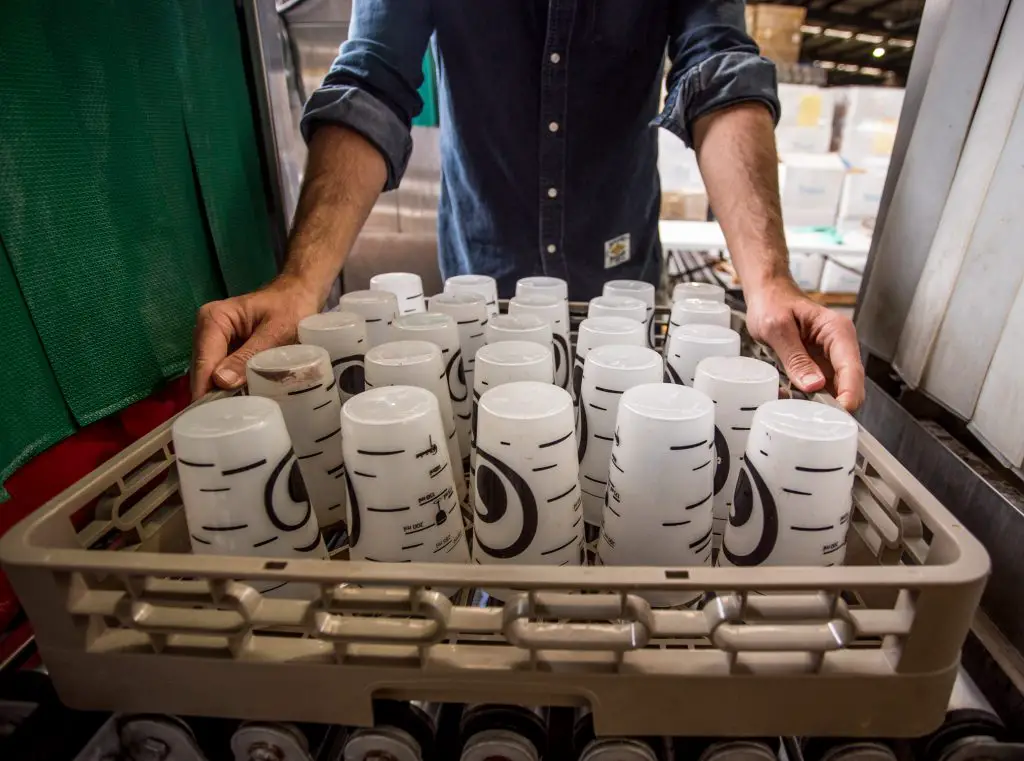
10. GE Dishwasher Not Drying
Due to a leak in the gasket that seals the door, your dishwasher will not correctly dry your dishes.
Corrosion or damage from foreign objects may cause a crack or hole in the gasket. It could also be a manufacturing defect.
11. GE Dishwasher Arms Not Spinning
It is most commonly caused by food particles or burnt-on grease accumulating around the arm’s pivot point.
1. Remove the dishwasher’s front panel
2. Inspect the area for any build-up
3. If there is, clean it off with a wire brush or an abrasive pad
4. Put the access panel back on
5. Check if the problem has been solved
12. Dishwasher buttons not working
The buttons on your dishwasher may not work for several reasons. The problem may be caused by dirt buildup, an electrical problem, or a problem with the trap and filter. You should begin by thoroughly cleaning the dishwasher buttons.
13. Dishwasher lights flashing or blinking
The heating element heats the water to its operating temperature. A light on the control panel may start flashing when the water doesn’t reach the proper temperature after a specific time.
14. Dishwasher dispenser not dispensing soap
The dispenser may be blocked. After the cycle, check if there is detergent in the dispenser or on the bottom of the tub. Cookie sheets and cutting boards in the lower rack can block the dispenser door.

15. Dishwasher making noise
Buzzing noises are generally not a cause for alarm. For example, the dishwasher hums when it forces water down the drain. Instead, check your pump impeller for damage or blockage if the noise is very loud. It requires removing the lower basket, spray arm, and filter unit.
16. GE control board problems
To solve GE dishwasher problems, you must first determine whether the problem is related to the control board or the actual dishwasher itself. To do this, perform the following:
- You will need to hold the Start button for five seconds now.
- Next, the start button should begin flashing.
- Next, hold the Start and Select Cycle buttons for five seconds for the final step.
- Now that the dishwasher control panel has lit up, it should be ready to use.
If the problem persists, then call the service provider for further assistance.
17. GE dishwasher spray arm clogged
It is usually due to debris getting caught in the spray arm. Remove the lower basket, spray arms, and filter unit. Clean out all parts using warm soapy water.
It is recommended to replace the spray arm as soon as possible.
18. GE dishwasher sensor problem
Your dishwasher sensor detects the presence of items in the dishwasher. When the sensor does not detect the presence of items in your dishwasher, the machine will run without detecting the presence of items.
As a result, the machine will continue to run even though no dishes have been loaded into the dishwasher, causing dishes not to be washed.
To correct the issue, follow these steps:
1. Disconnect power from the appliance
2. Open the dishwasher door
3. Wait 10 minutes
4. Plug the dishwasher back in
5. Turn the dishwasher on again
6. Run a full cycle
7. If the problem still occurs, contact the manufacturer for further assistance.
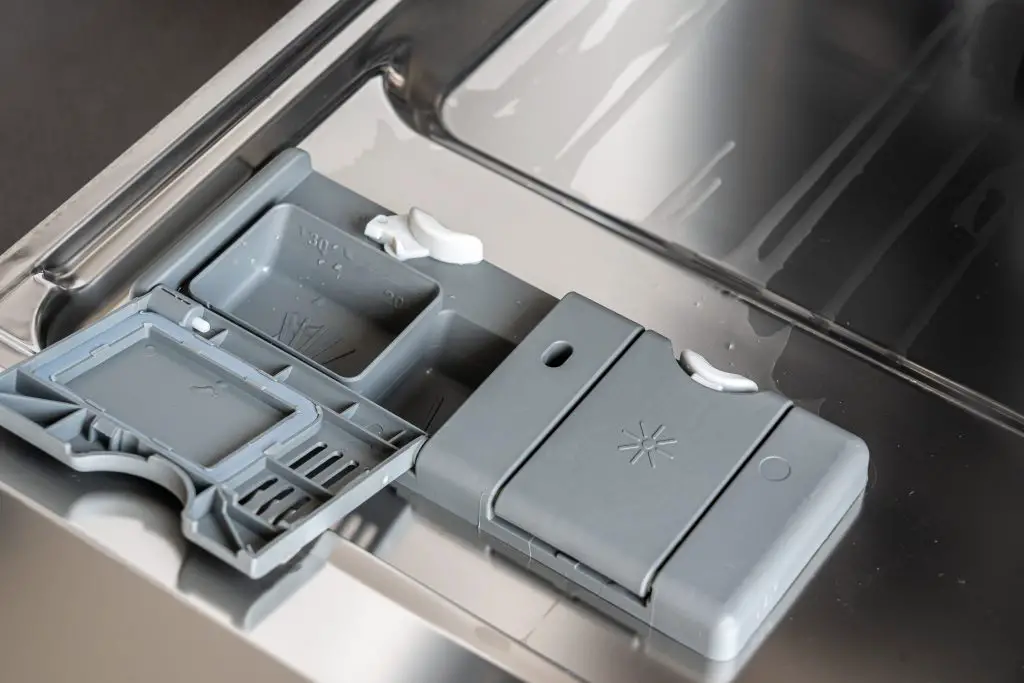
19. GE dishwasher timer problems
If your dishwasher timer doesn’t seem to be working correctly, there are a few things you can do to troubleshoot the issue.
- Ensure nothing is blocking the detergent cup.
- Every cycle, close and open the detergent cup.
- Ensure the detergent cup is fully open when the timer stops and the machine starts washing if it is under water.
- The timer knob or control panel may be damaged. There may be a sticky substance between the knobs or dials of the timer, causing cooking time to be inaccurate.
- Orange juice, etcetera, would bind to the Timer knob and make it unusable if it formed a bond.
- Pull off the knob by hand after cleaning out dust and dirt. Clean behind it with a damp cloth.
- If the knob doesn’t move, it might need to be serviced.
20. GE dishwasher solenoid problems
Another common issue with GE dishwashers is the solenoid, the part of the machine controlling the draining process, and the dishwasher drain valve.
If your dishwasher is leaking or has poor water drainage, it may be due to a blockage in the solenoid.
To test if this is the case, turn off the power to the dishwasher and remove any obstructions from the hose connection. Your solenoid is likely blocked if water starts flowing again after clearing the obstacle. You will need to remove and replace the solenoid to fix this problem.
21. GE dishwasher flood switch problems
The flood switch in your dishwasher regulates the amount of hot and cold water entering the appliance, ensuring the cycle runs smoothly.
The flood switch may malfunction if your dishwasher is overfilling or underfilling with water. If it’s defective, water can flow out when the dishwasher is not in use, leading to flooding and eventual damage.
- To test if your flood switch is defective, turn off the power to your dishwasher.
- Remove components including the lower rack, wash arm, fine filter, coarse filters, the filter adaptor, and the bracket which holds the switch in place.
- Replace the flood switch and put all the components back. Replacing this will usually fix the problem.

22. GE dishwasher steam vent problems
If your dishwasher has a problem with the steam vent. The following steps will help you troubleshoot and fix the issue.
- You must first rotate the cover counterclockwise, found on the inside of the panel, to remove the defective vent.
- Take it off the door by lifting it.
- Pull the vent off the inner door panel once the cover is no longer attached.
- Replace it with a new one.
23. GE Profile dishwasher leak problems
One of the most common GE dishwasher problems is leakage. This can happen for several reasons: a worn or broken gasket, damaged seals, or a faulty pump.
This can be caused by a clogged drain line or a malfunctioning pump. You’ll need to unclog the drain line and replace the pump to fix this problem. In addition, you’ll need to remove the dishwasher and replace any damaged components to fix this problem.
24. GE dishwasher door spring problems
If you are experiencing problems with your dishwasher door not opening or closing correctly, there is a good chance that the door spring is malfunctioning. Follow these easy steps to troubleshoot and fix the issue:
1. Check if the door is closed correctly by putting your hand inside the dishwasher and feeling for obstructions. If the door is not closing correctly, it may be because of an obstruction in the hinge or spring mechanism.
2. If the door does not close properly due to an obstruction, remove any items that may be blocking the door from closing completely. This includes cups or plates stacked on each other and large utensils stored inside the dishwasher.
3. If the obstruction still exists, replace the door spring with a new one. To do this, turn off the power to your dishwasher, remove the screws that hold the dishwasher cabinet, and then remove the dishwasher’s panel.
4. Next, take out the old spring and replace it with a new one. Make sure to match up the correct size and type of spring according to your model number. Finally, replace the screws and panel before reattaching them to the dishwasher cabinet.
5. Test the door to see if it opens and closes properly now. If not, continue to step 6 to fix any other problems causing the issue.
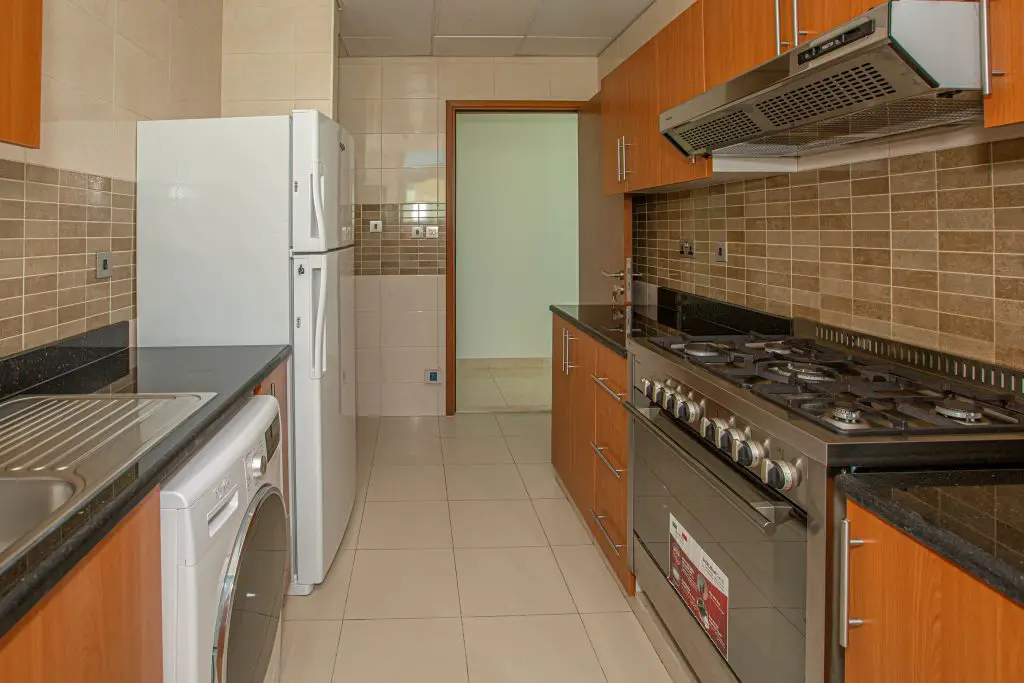
25. GE dishwasher no power no lights
If your GE dishwasher is not powering on or has lost power, there are a few things you can do to troubleshoot the issue.
First, check to see if there is power at the electrical outlet where the dishwasher is plugged in. If there is power at the outlet, your dishwasher may need a new power cord.
If there is power at the outlet or the cord fails, your dishwasher may have a broken circuit board or an issue with the electrical wiring. If neither of these solutions works, you may need to call an electrician to fix the problem.
26. GE dishwasher air gap
There is a good chance that your dishwasher drain hose is connected to an air gap since you don’t have a garbage disposal.
Draining your dishwasher can be affected by a clogged air gap. A leaking air gap vent located on top of your sink often indicates an obstruction has formed.
With a long, straight cleaning brush and water, clean away the debris obstructing the air gap to determine whether the dishwasher is unable to drain because of a clogged air gap.
27. GE dishwasher not draining all the way
If your GE dishwasher is not draining all the way, you can check a few things to see if the issue is with the dishwasher itself or the drain system.
First, you can check to see if something obstructs the dishwasher’s drainage. This could be a clog in the dishwasher’s drain pipes or a blockage in the dishwasher’s filter. If there is a blockage, you must remove the obstruction and clean the dishwasher’s drainage system.
In most cases, the dishwasher will need to be replaced if the problem cannot be resolved. However, if your dishwasher might be defective, please contact GE customer service for more help.
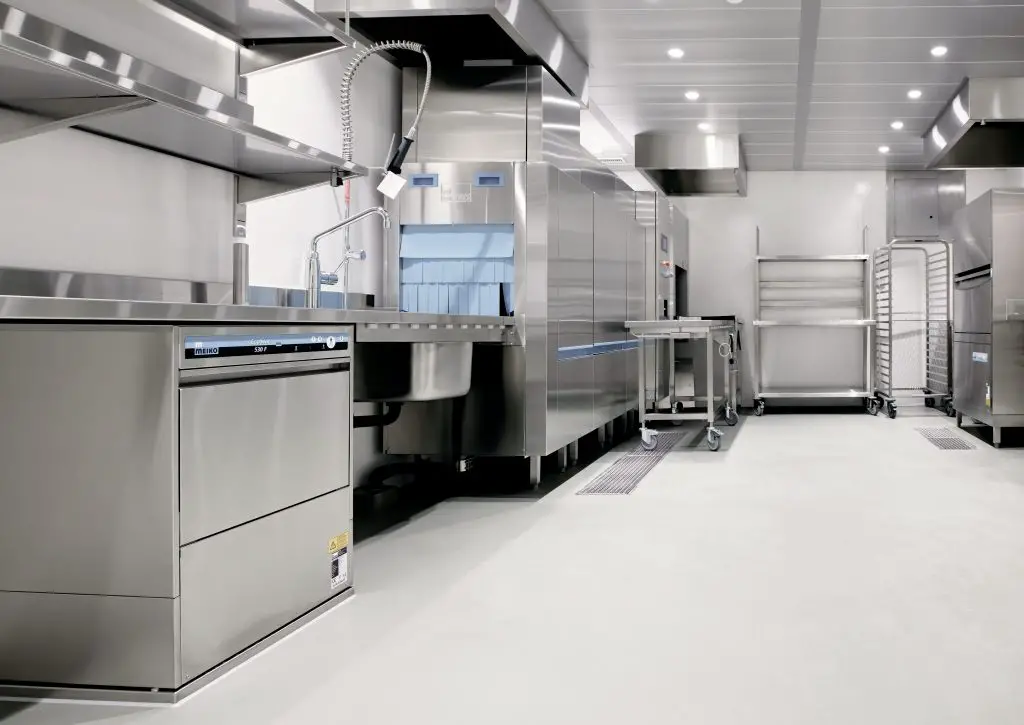
28. Dishwasher won’t turn on after power outage
First, check to see if the breaker is tripped. If it isn’t, your dishwasher may be unplugged and need to be plugged back in.
If the dishwasher is plugged in, try flipping the breaker and see if the dishwasher starts up. You may need to take it to a service technician if it doesn’t start.
How to diagnose dishwasher problems?
If you have a dishwasher that is not running or is not cleaning your dishes as well as it used to, there are likely some problems you can diagnose and fix.
- Check for a blown fuse or tripped circuit breaker.
- Check that the dishwasher is plugged in securely.
- Inspect the wiring connection to the dishwasher for burns or breaks.
- Check the door latch.
- Test the door switch.
- Test the timer motor.
- Test the selector switch.
- Test the motor start relay.
Conclusion
Dishwashers are one of those household appliances that most people use daily, but few understand how they work. They are simple machines but require much maintenance to keep them running well.
As shown in this article, you can fix a GE dishwasher whether it is not starting or latching, not cleaning, draining, buttons not working, lights flashing or leaking, making noise, or not drying dishes.
To learn how to repair a GE dishwasher, follow this guide. Also, get the most from your dishwasher by maintaining and servicing it properly.
FAQ
The average life expectancy of a GE dishwasher is about 10 years. However, some models last longer than others. If you properly maintain your dishwasher, it can last much longer. You should perform regular maintenance checks to ensure your dishwasher works as intended.
Yes, sometimes they do occur! But there are easy steps to take care of these issues. So you don’t have to worry about them anymore.
GE dishwasher repair tips to keep your appliance running smoothly:
1. Keep the interior of the machine clean.
2. Use only clean water when washing dishes.
3. Avoid using harsh detergents.
4. Do not run the dishwasher without first turning it off.
5. Always follow the manufacturer’s instructions.
6. Never place hot items directly into the dishwasher.
7. Run the cycle time recommended by the manufacturer.
In the case of GE dishwashers, FTD stands for failure to drain. There is a problem with the draining of GE dishwashers that display the FTD error code. There may be a clog in the dishwasher pump, the drain hose, or the filter area.

